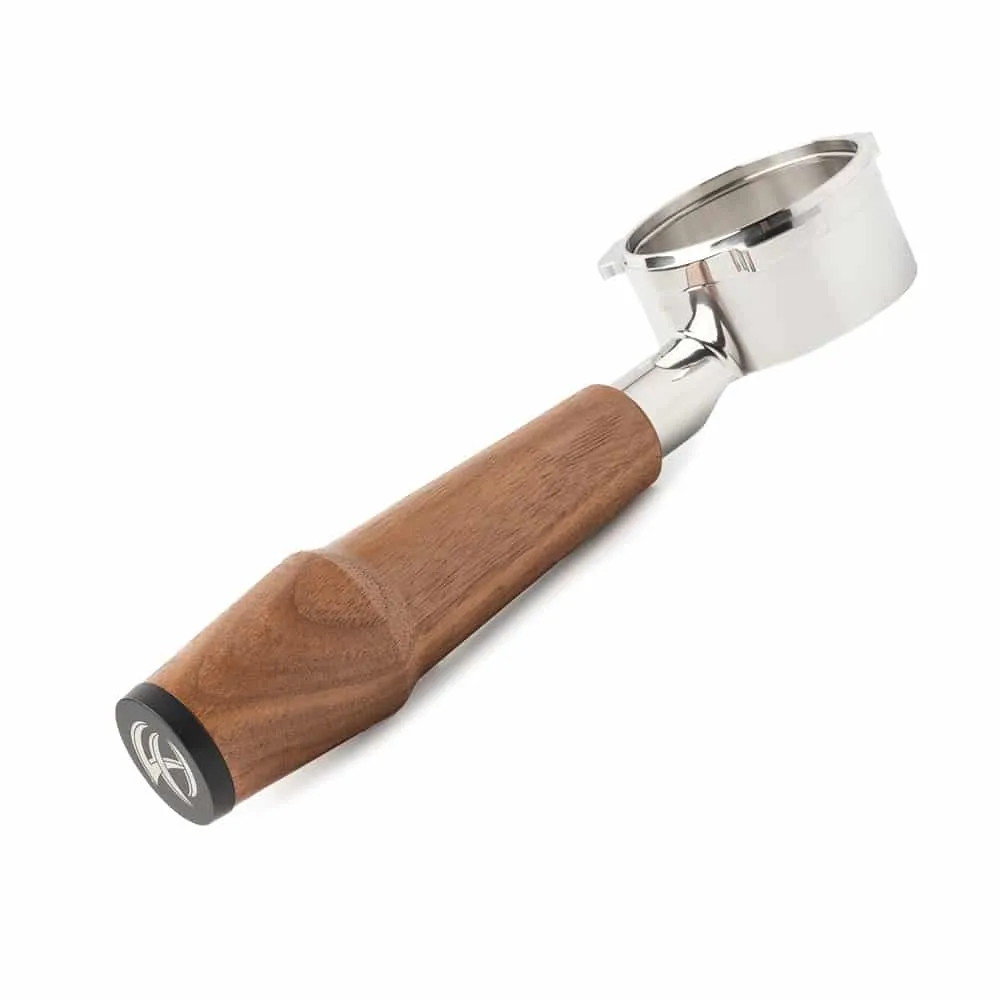The portafilter is one of the most important components in espresso preparation. It serves as the vessel that holds the coffee grounds during extraction, determining how water flows through them. The design, material, and size of the portafilter all influence the final taste of the espresso. A well-chosen portafilter ensures optimal extraction, leading to a balanced and flavorful shot, while a poorly designed one can cause uneven extraction, resulting in a sour or bitter taste.
Material and Its Influence on Flavor
The material of the portafilter is a key factor in the preservation of the temperature that, in turn, determines extraction quality. Stainless steel and brass are the two most common materials for portafilters, each having its own particular pros and cons. Stainless steel is resistant to corrosion and easy to clean, thus it can be said that it does not participate in adding or changing scent alteration at all. Brass, unlike stainless steel that does not absorb heat easily, is a fantastic heat reservoir that will give out warmer water without change during the operational phase of brewing.
The Influence of Handle Design on Consistency
Though it is often neglected, the handle component of a portafilter design has a fundamental role in the barista’s comfort and control and thus the final result in the brewing of espresso. An ergonomic handlebar well-balanced portafilter permits a steady compression, thus lowering the chances of irregular distribution of the coffee powder. Misconfiguration is a direct cause of bad handle design that can result in applying the wrong tamp, which inevitably makes extraction unbalanced. Wooden handles are not just good-looking but also a lot of work to keep them in shape while rubberized or plastic handles are durable and easy to grip.
Heat Absorption and Its Influence on Espresso Quality
The degree to which a portafilter can retain heat is integral in continually providing a temperature-controlling environment during the brewing process. A cool portafilter, instead of benefiting the process, takes away heat from the brewing water, which causes low temperatures and under-extracted espresso. The result might be a sour shot or just feeling weak in flavor. The baristas’ response to this problem might be to run hot water through the portafilter to preheat it before brewing. A portafilter that is heated well will guarantee that the water temperature is constant, which in turn will lead to optimal flavor extraction and a full-bodied espresso.
The Necessity of Proper Cleaning and Maintenance
Using a portafilter that is dirty can be the reason for the unwanted flavors being present in your espresso. The old coffee oil build-up on the portafilter would cause the machine to produce shots that could be tasting rancid. Regular cleaning and maintenance of the portafilter will help in preserving the taste of coffee. Cleaning can simply involve rinsing your portafilter after each use and periodically deep cleaning with special detergents as this eliminates the chance for contamination and ensures that every shot is as fresh as possible.
What the Portafilter Means for the Crema Composition
Achieving a thick and persistent crema is primarily promoted by a precision portafilter-hole with distributed evenly holes, which allows achieving even extraction. Contrariwise, the low-quality portafilter that produces inconsistent extraction also results in thin and broken crema, which can mean the wrong coffee saturation. Due to crema’s function of entrapping the aromatic substances, the quality of the freshly-extracted espresso along with the quality of the crema layer improves the sensory experience.
Flow Rate and Pressure in Development of Our Senses
The portafilter is directly responsible for controlling both the pressure and flow rate during the extraction. If the portafilter basket permits water to flow through too fast the espresso will be under-extracted ending up sour or acidic. On the other hand, if the flow rate is too low, the espresso will be finally over-extracted making it excessively bitter. Pressure balance, grind size, and portafilter quality get to formulate flavor complexity and depth. The process of allowing the portafilter to opt for the least water resistance that is appropriate is central to creating a perfectly balanced shot.
Summary
The portafilter is not only a coffee holder, it is a must-have piece of equipment in the espresso-making process. Its size, material, basket type, design, and heat retention are responsible for the final taste of the espresso. A well-designed portafilter, with the help of perfect temperature, ensures the same degree of saturation of all the coffee and the same balance of flavors. Whether you choose a spouted portafilter or bottomless one, the investment in the quality one will surely bring your overall framework of espresso. Proper maintenance and the knowledge of how your portafilter is influencing brewing parameters allow both baristas and home users to achieve consistency in delicious espresso shots.
Want more insights? Keep visiting Lotology for the latest updates and information!

